Now we come to the reason for all the fuss about the light at the top
of the mezzanine stairs. There is a raised platform in front of the
dome slit which moves with the dome and in some orientations may cover
all or part of the stairs. Many observers have inadvertently
discovered the hazard this presents going either up or down. Legend
has it that at least one fairly serious injury has been caused by the
long step off of the stairs from the lower platform and down the
partially covered stairwell instead of onto the expected solid floor.
The writer can attest that walking up the stairs into the bottom of
the aforementioned platform will wake one up, no matter how tired and
cold. Therefore, it is again suggested you leave on the small red
light at the head of the mezzanine stairs, and use the alternate
stairs at the south end of the polar axle when necessary.
In addition to the fixed platform just above the mezzanine floor there
are two other platforms (see Figs. 22-25). One is fixed at a high
level of the dome away from the dome slit. The third platform is
movable and runs up and down on an inclined track between the other
two. The movable platform (usually just called "the floor" or "the
platform") is the one from which the actual observing is usually
conducted. All three floors move with the dome when the dome is
rotated.
There are various HAZARDS associated with this movable floor, as follows:
- When "lowering the floor," be sure nothing is on the lower fixed
platform, such as your lunch or observing assistant, since the
clearance is only a couple of inches with the floor all the way down.
- Be very aware that with the floor lowered part way it is a long
step into the ensuing abyss between it and the upper platform, or vice
versa. Use of the stairs is suggested. It is further recommended
that the four nylon ropes provided be used to rope off the passageways
at both ends of both the movable floor and the upper fixed floor
(Fig. 7). It takes much less time to hook up these ropes than to
recover from a broken neck, and what looks like an obvious hazard at 6
p.m. when you're warm may recede from consciousness at 3 a.m. when
you're cold. Avoid a permanent recession from consciousness. Hook up
the ropes. BUT - don't inadvertently rope the movable floor to the
upper fixed floor! It's been done more than once.
- Guard against lowering the floor from the full up position with
the telescope very close to the edge of the movable floor. There is a
flange on the telescope tube about five feet down from the top with
just fits under the floor (Fig. 8), so if the floor is lowered all the
weight is momentarily placed on the tube (bad) and then the floor slips
off with a frightening (in the dark) crash and may result in
catastrophic failure of the elevator mechanism, if not your heart.
- When rotating the dome, avoid scraping the tube of the telescope
with either the movable or upper fixed platform. The geometry is a bit
deceptive, but there's really no excuse for not being careful about
such an obvious thing.
- Since the movable floor is in fact a funicular railroad (really
true; examine it closely!) there is a limit to the number of people
which can be safely carried on it, namely three. This limit applies
only when the floor is in motion. To exceed this number is to court
mechanical failure.
There is a black sheet-metal rain-screen at the apex of the dome. It may
be moved by the white rope around a big cast iron wheel on the upper
fixed platform. Be certain to put the rain-screen back in position
above the telescope each morning, as well as covering the top of the
telescope itself with a plastic sheet or telescope cover, because the
dome leaks badly during storms (Fig. 9).
The windscreen, dome rotation and movable platform are all
electrically controlled by a single paddle (the "dome paddle") on the
movable platform (Fig. 10). The six buttons on the paddle are well
marked in pairs, and are for windscreen up/down, floor up/down and
dome left/right (i.e., left and right as you face out the slit). All
of these buttons operate only when held down. There are limit switches
at the extremes of operation of the windscreen and platform. Always
let the dome come to a complete stop before reversing
directions. Avoid hanging this paddle on the telescope, thereby
connecting the telescope to the movable floor. The paddle usually
hangs on a screw beside the logbook counter.
Above the logbook counter on the movable platform is a small control
panel with two large rheostats and a number of buttons and switches
(Fig. 11). On the right are three white switches. The first (left to
right) turns on a red light illuminating the sidereal and PST clocks
to the left of the slit. The second enables the two large rheostats on
the panel, which independently control red and white lights which
illuminate the logbook counter. The third white switch has no
function. At the top of the panel are some dome rotation controls.
When pressed, these cause the dome to rotate continuously until
stopped by the red stop button. Please use these with caution. The
relative geometry of the floors and telescope changes in peculiar and
sometimes unexpected ways, so it is advisable to use only the dome
rotation buttons on the paddle so you maintain better control. On the
left are floor up and down buttons which are disabled, and a panel
control switch which should be taped "on". Please leave the panel
control switch on at all times. It controls the power to all of the
other switches on the panel as well as to the dome paddle. If the dome
paddle doesn't work, check to be sure this control switch is on before
calling for assistance.
Notice that the shelf across the front of the movable platform may be
lowered by pulling the handle on the center underside of the shelf
toward you. The shelf then rotates back (toward the slit) to two
intermediate positions and all the way to the floor, if necessary for
access to very low objects (Fig. 12).
On the upper platform is a long plank which may be used to bridge the
gap between the upper and movable floors in order to get access to the
eyepieces when the telescope is nearly vertical and the slit is east
or west.
Finally, each night be sure to fill out the black "Crossley Telescope
Maintenance Logbook" kept on the movable platform. This is how the
Maintenance Department knows if anything required repair. If
everything works well, so note. At the beginning of your run it may
help to read the last few entries so you know what has recently caused
problems. If there are any problems with the telescope or dome, please
also submit a trouble report to the 3-m telescope operator (ext. 8-0652).
|
 |

Figure 22
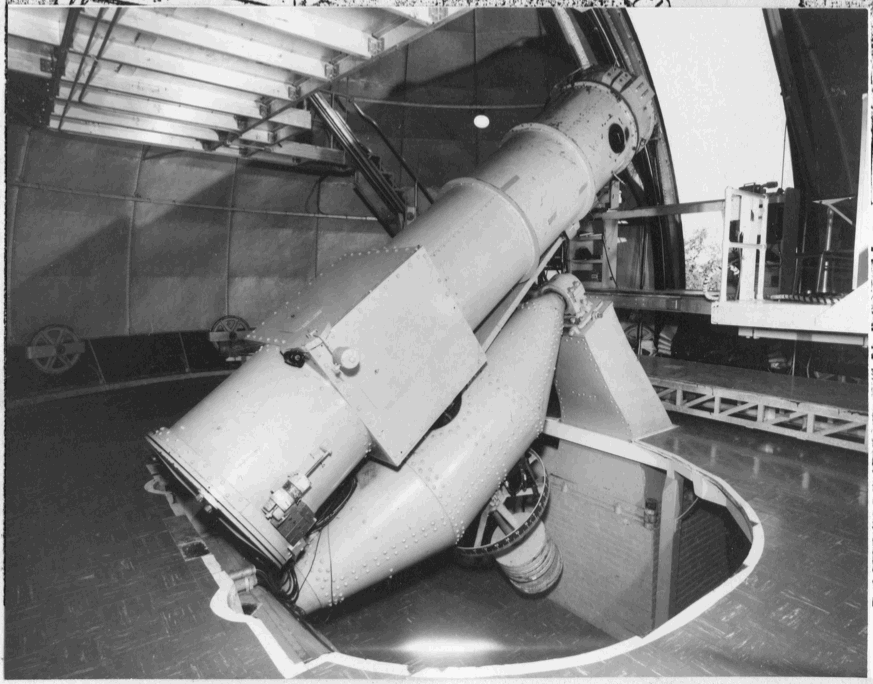
Figure 23
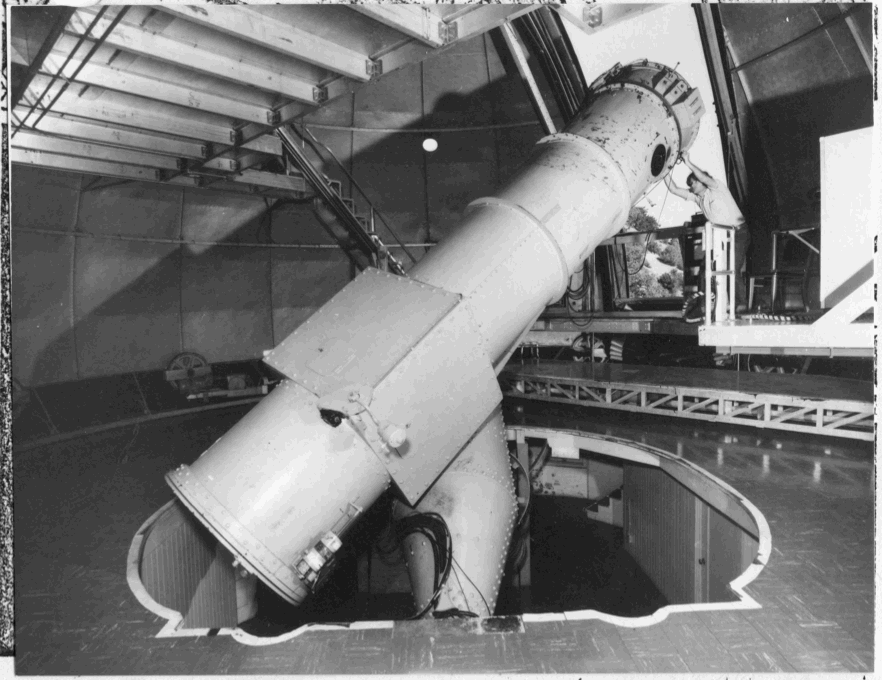
Figure 24
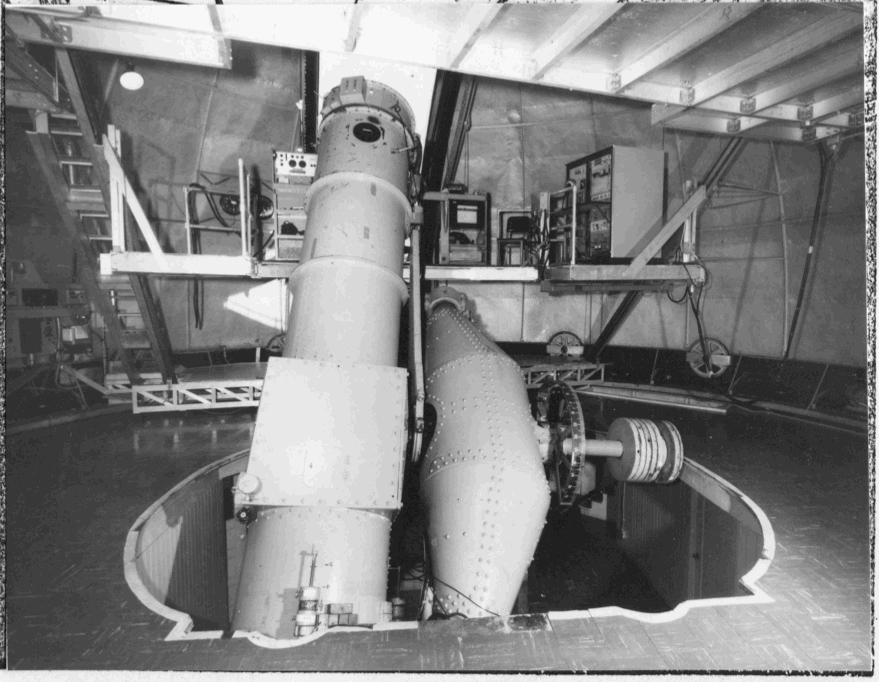
Figure 25

Figure 7
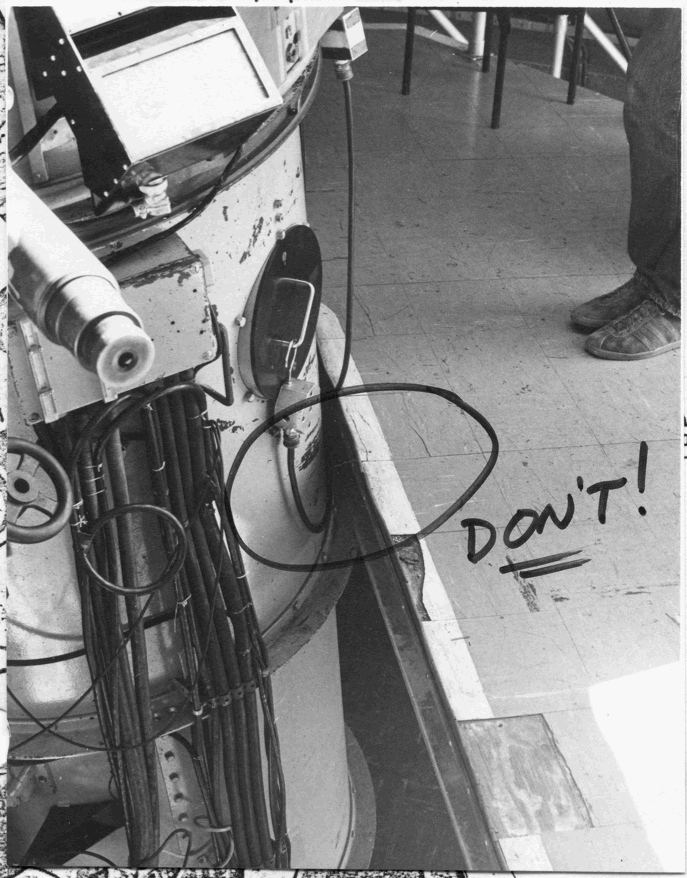
Figure 8
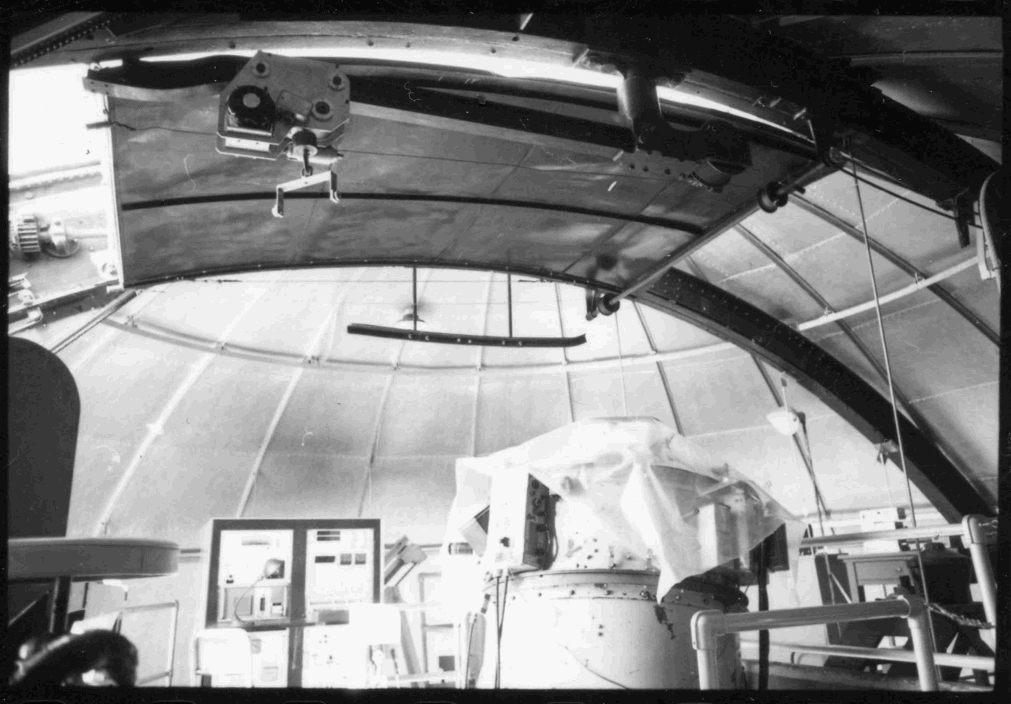
Figure 9
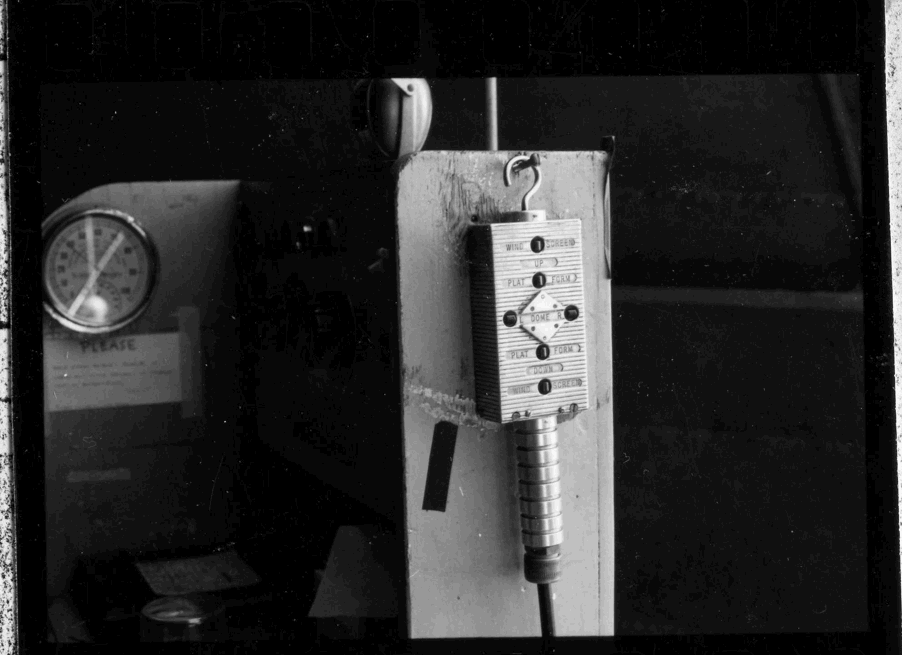
Figure 10
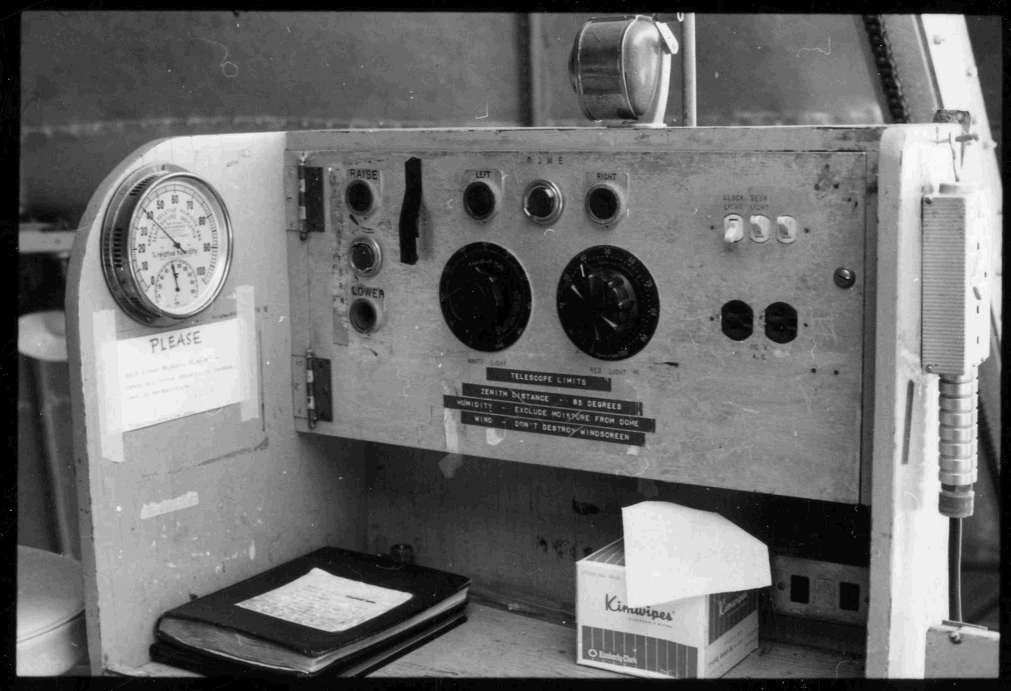
Figure 11
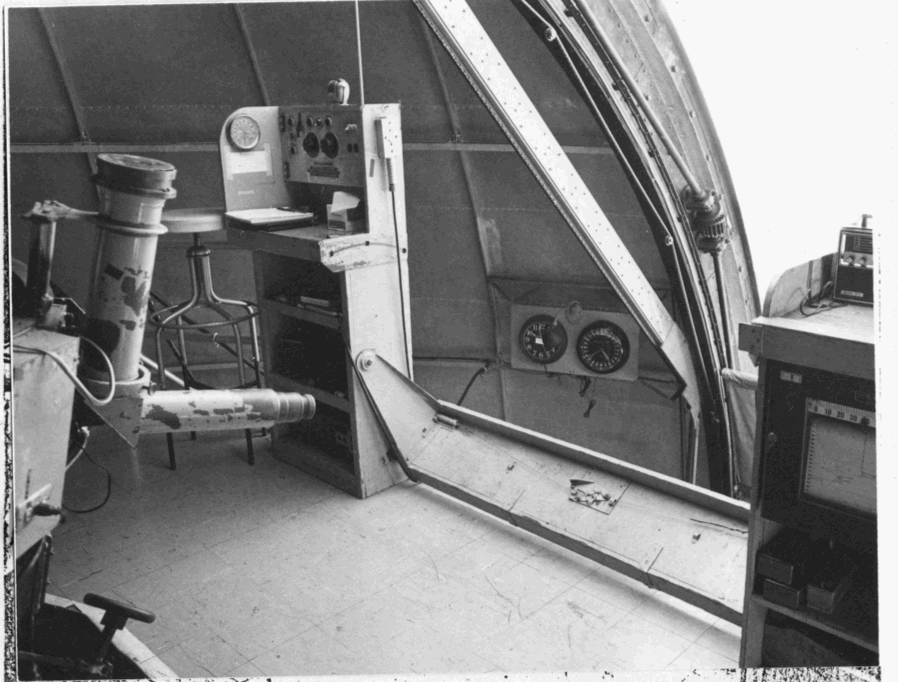
Figure 12
|